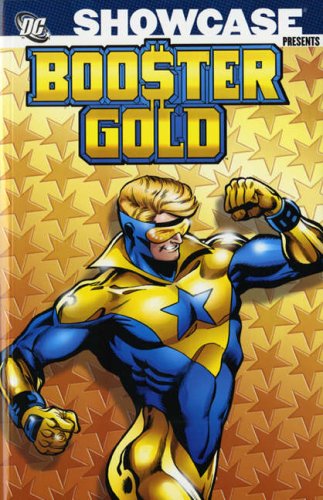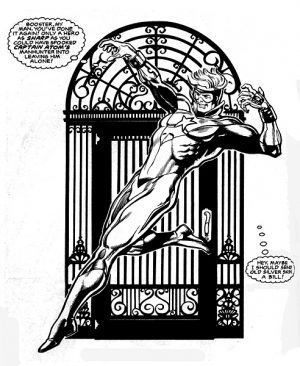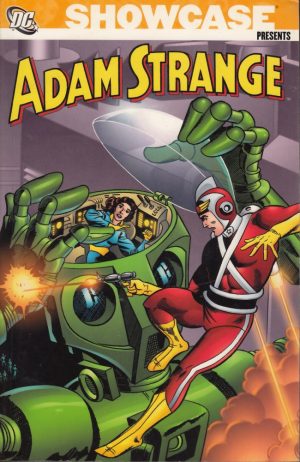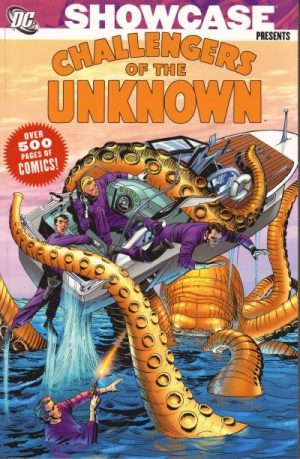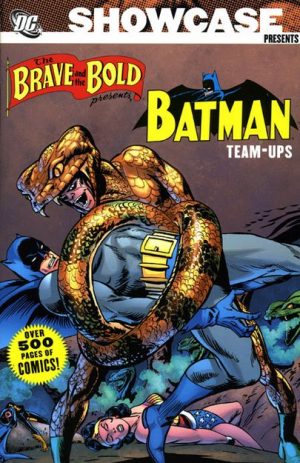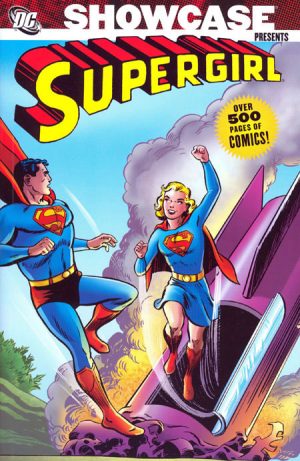Review by Win Wiacek
Shiny, happy hero Booster Gold was introduced in the mid-1980s, and this economical black and white edition features Booster’s entire 1980s solo material from creator, writer and penciller Dan Jurgens, plus a crossover with Superman from John Byrne.
The blue and yellow paladin appeared amidst plenty of hoopla when ‘The Big Fall’ introduced a brash, cocky, mysterious metahuman golden-boy jock who sets up his stall as a superhero in Metropolis. Controversially, he actively seeks corporate sponsorships, sells endorsements and has a management team in place to maximise the profit potential of his crusading celebrity.
Accompanied everywhere by a sentient flying-football-shaped robot Skeets, the glitzy showboat soon encounters high-tech criminal gang The 1000 and their super-enforcer Blackguard, earning the ire of sinister mastermind the Director and the shallow approbation of models, actresses, headline-hungry journalists, politicians and the ever fickle public. The Director would prove a recurring problem, while Jurgens strayed from convention by keeping Booster’s origins under wraps for half a dozen chapters.
When finally disclosed, we learn Michael Jon “Booster” Carter was a rising sports star in the 25th century who fell in with a gambling syndicate and began fixing games for cash pay-outs. When caught and banned he could only find work as a night-watchman in the Space Museum. Whilst there he struck up a friendship with automated tour-guide and security-bot Skeets, embarking on a bold plan to redeem himself. Stealing a mysterious flight ring and force-field belt plus energy-rods, an alien super-suit and wrist-blasters, Booster used the Museum’s prize exhibit, Rip Hunter’s time machine, to travel to 20th Century Age of Heroes and earn all the fame and glory his mistakes had cost him in his own time.
He eventually earns Presidential approval, but discovers he’s not immune to 20th century diseases, and a return to the future is required to cure him. This is despite Booster’s offences carrying a mandatory death penalty in his home era!
The art is always competent, but until two-thirds of the way through suffers an annoying hindrance, designed as it was for high quality, full-colour comic, not stark, black and white reproduction. Although legible, discernible and adequate, much of the earlier art is fine-lined, lacking contrasting dark areas and often giving the impression that the illustrations lack solidity and definition. Toward the end the marvellous Ty Templeton becomes regular inker, and his bold, luscious brush-strokes brought a reassuring firmness and texture to the proceedings. As if to affirm the artistic redirection the stories became a tad darker too.
This sequence begins with Booster’s search for his missing sister impinge on an intrusion by belligerent aliens. To make matters worse the extra-dimensionals are using Michelle as a power-source to fuel their invasion. Subsequent stories are closely tied to Millennium’s plot of alien Manhunters having covertly replaced many people close to superheroes. ‘Betrayal’ reveals one of Michael Carter’s inner circle among them.
Booster Gold was a radical experiment in character that didn’t always succeed, but definitely and exponentially improved as the months rolled by. Early episodes are a necessary chore, but by the time the volume ends it’s a real shame that the now thoroughly entertaining and enjoyable ride is over. Booster would later be a core member of Justice League International, and these formative adventures lay the groundwork for his even later identity as a time-roving chronal cop.
In 2019-2020 these stories were finally collected in colour as The Big Fall and Future Lost.
